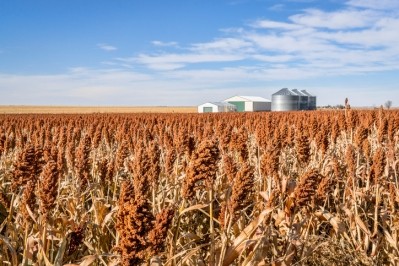US tariff proposals raise ag sector concerns, international retaliation

Recent US announcements on enacting the previously proposed tariffs on steel and aluminum and on select goods coming in from China have surprised some trading partners and raised fears of retaliation and damage to the feed grain and agricultural export markets.
The Trump Administration announced earlier this week that the US would be moving forward with applying a 25% tariff on about $50bn in goods imported from China – the final list of products covered is set to be released June 15. The tariffs, which were originally announced in March, were the result of an investigation regarding China’s practices concerning technology transfer, intellectual property and innovation.
The administration said the 25% tariff on steel imports and 10% tariff on aluminum imports would take effect late Thursday, May 31 for other US trading partners including Canada, Mexico and the EU.
The response also includes a set of investment restrictions and enhanced export controls regarding “industrially significant technology,” which are set to be announced June 30.
Several of the countries covered under those aluminium and steel imports tariffs are important markets for the feed and agricultural industry, said David Widmar, agricultural economist.
Trade with China
Chinese officials with the Ministry of Commerce said in a statement that they were surprised by the US’s decision as it was “contrary” to the agreements both countries had reached.
The ministry said that regardless of steps the US takes, China will act to safeguard the “interests of the Chinese people” and the country. It also urged the US to honor the intentions of a previous joint statement.
The interplay generated concerns for members of the US feed and agricultural industry as China had previously said it would retaliate if the tariffs were implemented.
The threat of tariffs generates market uncertainty and adds risk for soybean growers, who rely on the export market to China, said the American Soybean Association (ASA).
“This is real money to a soybean farmer trying to determine when to sell their crop,” said John Heisdorffer, ASA president. “Farm income is projected to be the lowest in more than five years and farmers cannot afford to have the bottom fall out now.”
The association, however, added that it was pleased to see the USDA sending negotiators to meet with officials in China and asked the administration not to erect barriers to international markets.
“Soybeans lead the way for agricultural trade with China, accounting for nearly $14bn in exports to China annually,” Heisdorffer said. “As we have called for months, we believe soybeans can be part of the solution and we’re hopeful to be a part of the conversation this week.”
An additional concern, should the US face a challenge to its soybean market in China, is that there would be long-term repercussions, added Widmar.
Additionally, several feed crop organizations including the ASA, National Sorghum Producers and the National Corn Growers Association wrote an open letter to the administration calling for ongoing negotiations with China to avoid “mutually destructive tariffs.”
The group of organizations said that the Trump Administration had been correct in identifying unfair trading practices that are in use, and encouraged continuing negotiations to establish “open and predictable trade.”
Tariffs: the EU, Canada and Mexico
In reaction to the implementation of tariffs on steel and aluminum, the three trading partners concerned said they would retaliate.
Canada has announced that it will bring surtaxes or other countermeasures on up to C$16.6bn in imported goods and is considering additional measures. Countermeasures are set to take effect on July 1. Two lists of products for either a 25% surtax or a 10% surtax have been released and include some protein meals like prepared meal of spent fowl and bovine.
Mexico said that it was considering tariffs on a range of goods, including pork. However, a definitive list has not been released.
Although feed grains have yet to be targeted specifically by Canada or Mexico, the US Grains Council said it is concerned that the response will damage the trade of feed and agricultural products. The EU said previously that its countermeasures would include a 25% tariff on feed and sweet corn.
“Based on information we have heard from our customers and past experience, we have every reason to believe US agriculture, including the products we represent, will be among the first hit by countermeasures from our trading partners,” said Tom Sleight, US Grains Council president and CEO. “These countries are among our closest neighbors and friends.”
Years of effort have gone into building and expanding those markets, he added.
“We had strong hopes this situation would be averted permanently, but it now appears we need to prepare for retaliation and its direct impact US farmers,” he said. “Our global staff is doing this to the best of their abilities as we continue to follow new developments.”
Much of that concern was echoed by members of the Farmer for Free Trade organization.
“This announcement opens the floodgates to billions in new tariffs on American agriculture,” said Brian Kuehl, executive director for Farmers for Free Trade. “The list of countries targeting or planning to target American ag exports now includes 28 EU members, our closest trading partners in Canada and Mexico, and the world’s largest export markets in China and India.”
The markets are important for the survival of the US agricultural sector, he added.
“These tariffs will harm US farmers and take many American farm operations to the breaking point,” he said. “Already, farmers are grappling with the impact of previous tariffs which have caused falling commodity futures, higher equipment prices, and the markets they’ve fought to get into for decades to vanish overnight.”












